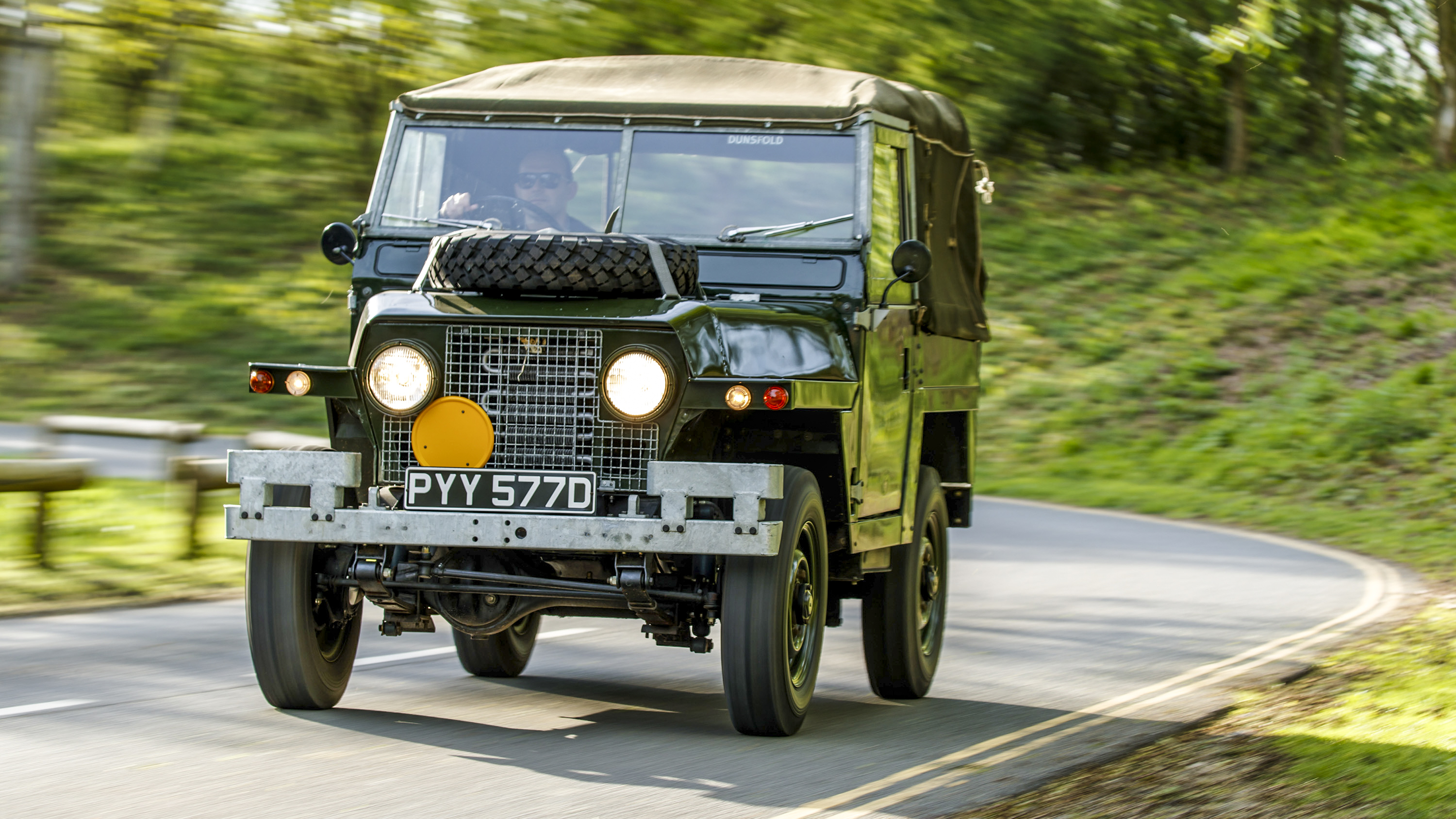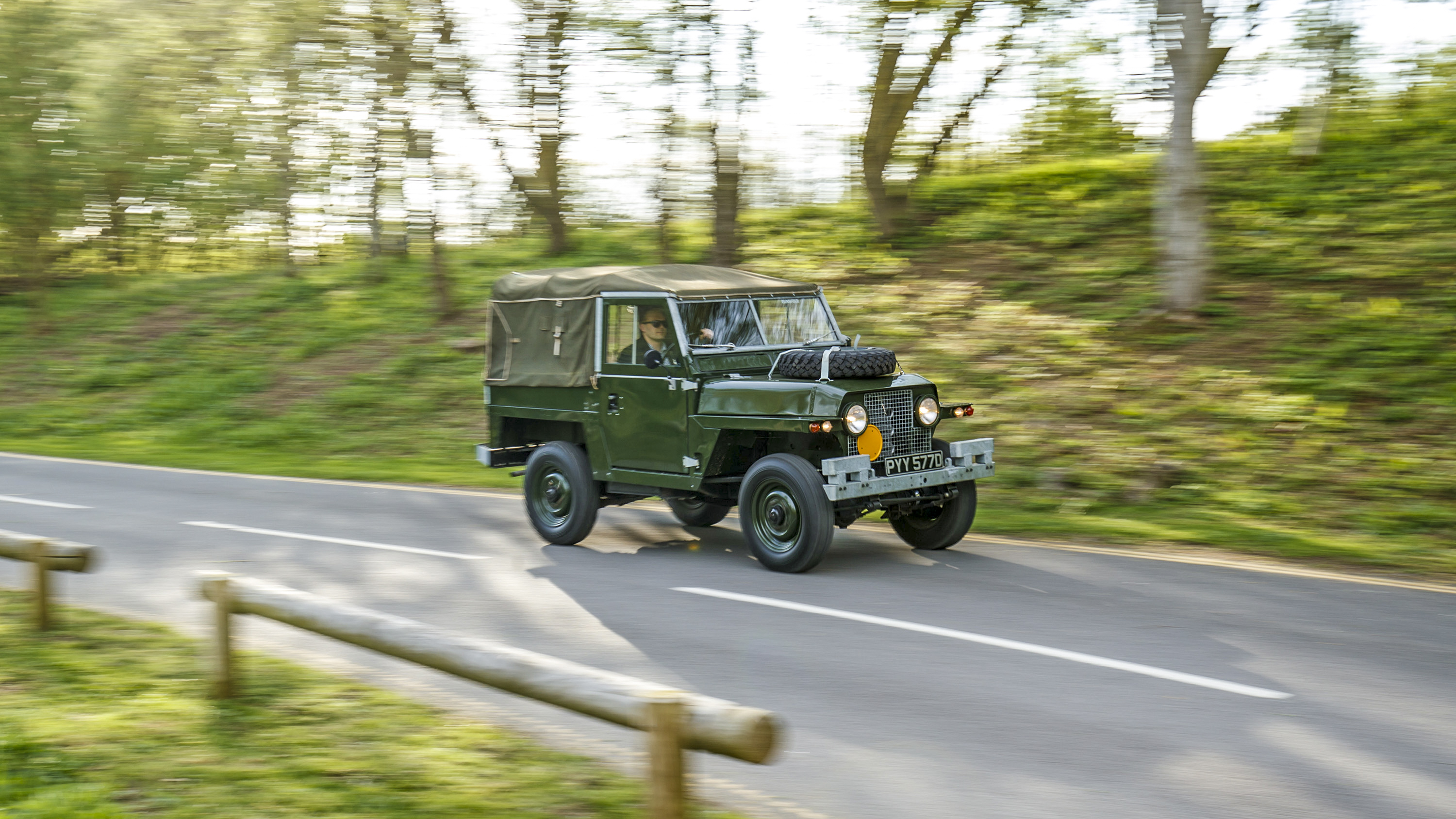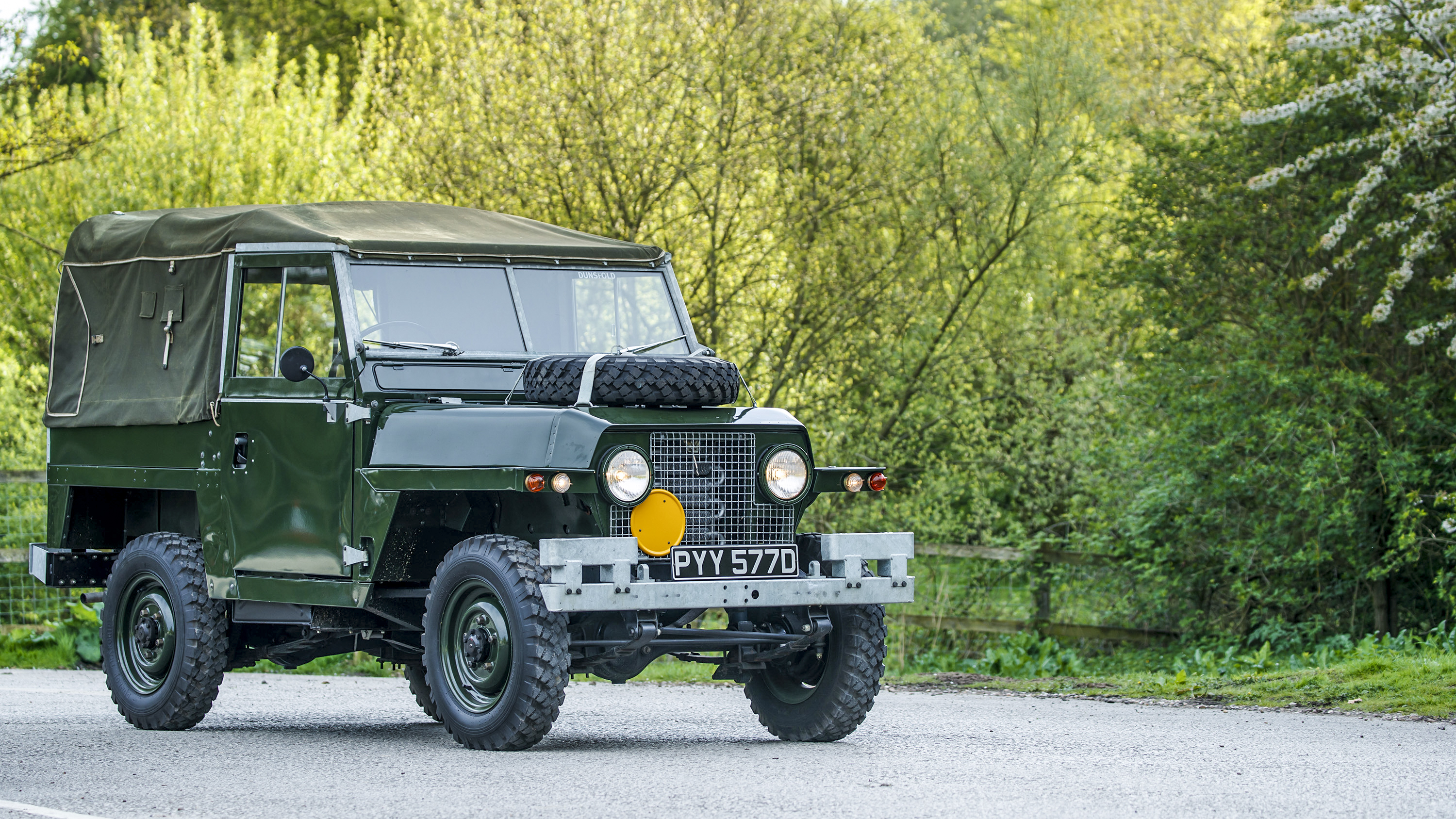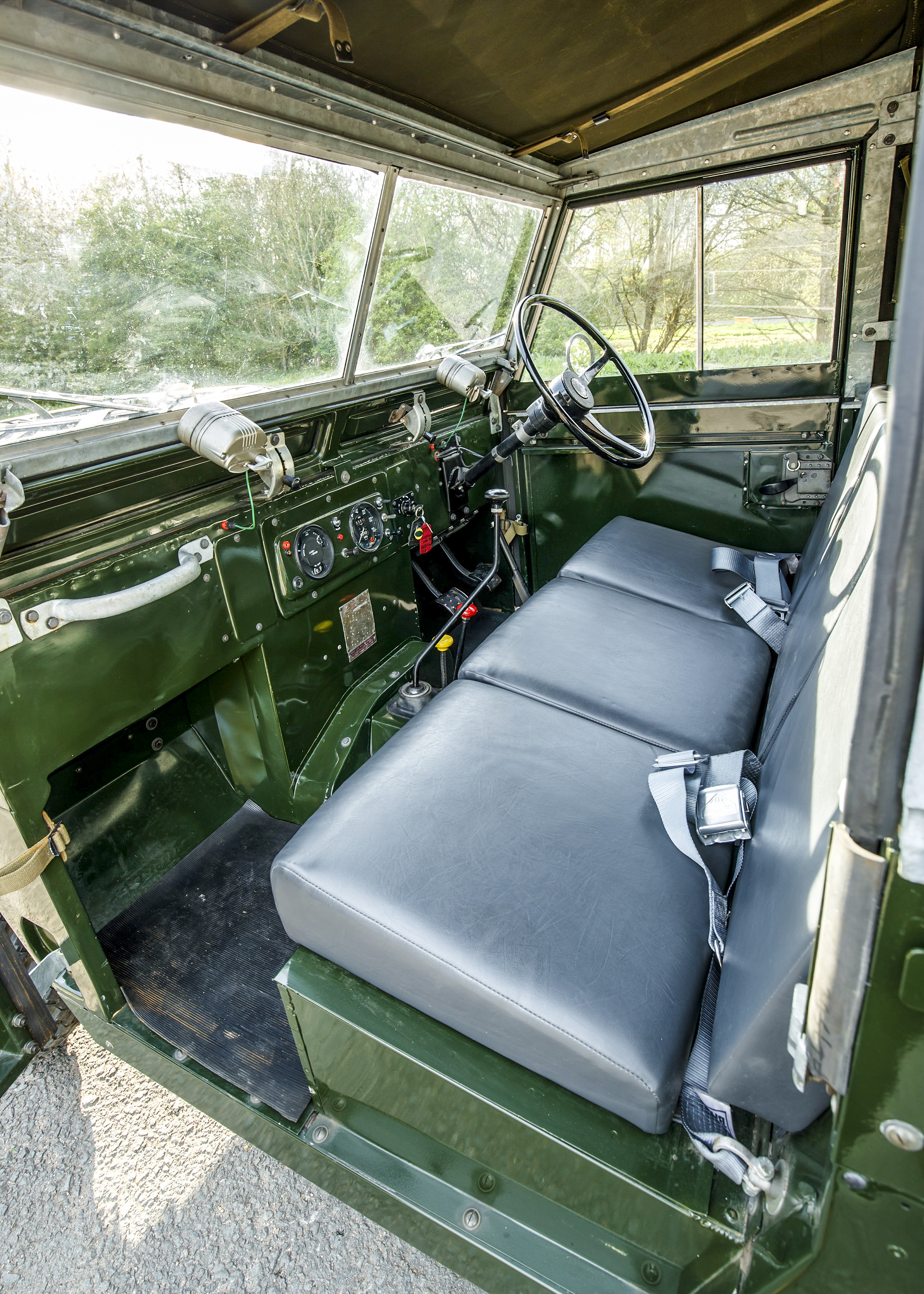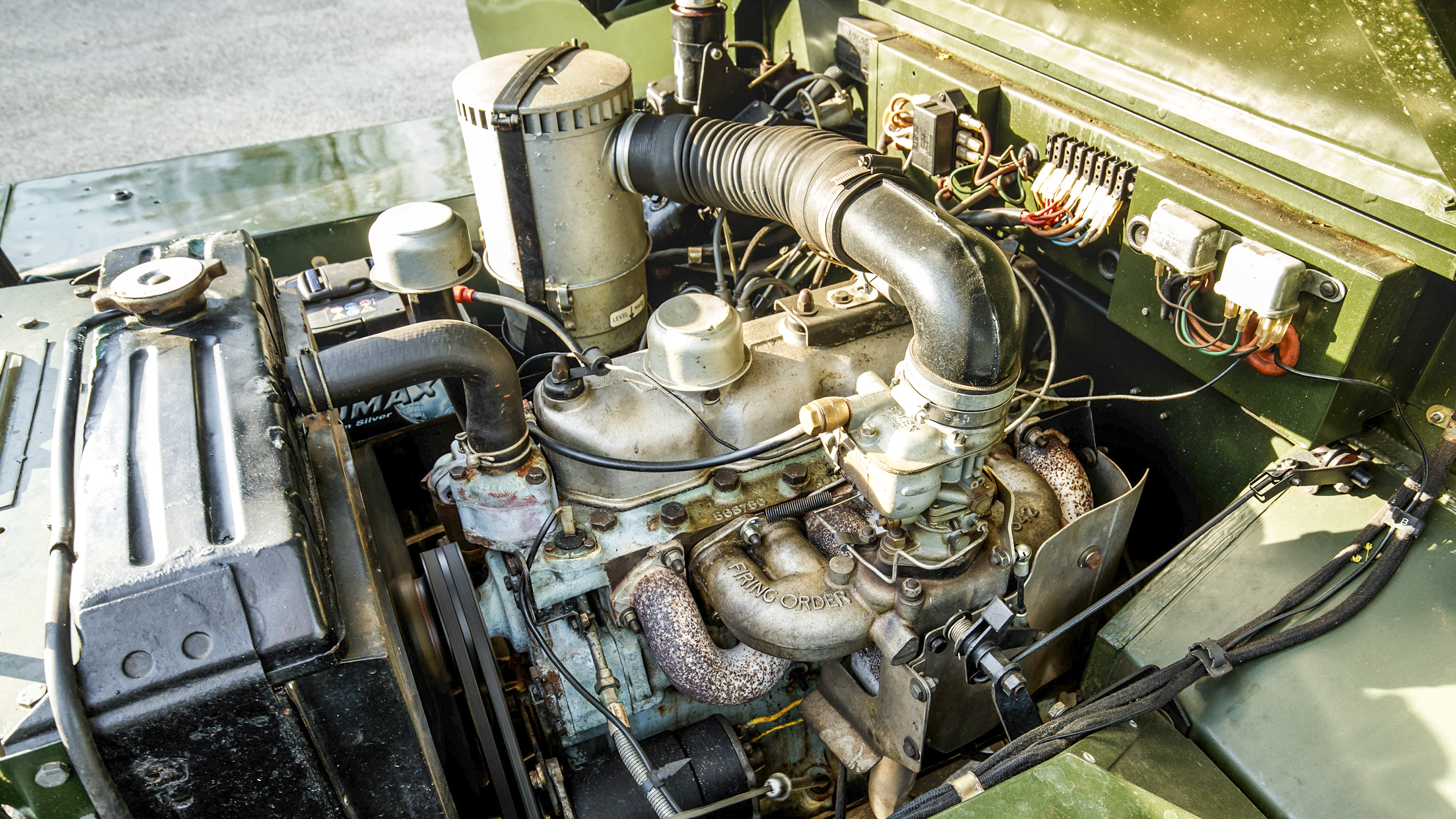
Driven: Land Rover's lesser-spotted lightweight special
We mark Land Rover's 70th birthday via one of the weirder moments in its history
A Land Rover lightweight special. It sounds like a joke, right? They’re built to be tough, substantial, robust… words that don’t go hand in hand with the world of lightweight cars, where delicate Atoms, Elises and Sevens reign supreme.
Yet that’s what you’re looking at here. Is it ugly? Perhaps. But as is usually the way, you superficially shun this car at your peril. Beneath the skin is a fascinating story and one of the coolest classic Land Rovers at the company’s 70th birthday bash.
It’s a military vehicle, one known officially as the ‘1/2 Ton Lightweight’, its name referring to the payload it was designed to carry. Its main aim, though, was to slim down so it was light enough to be carried by helicopter and skinny enough to squeeze inside a plane. What follows is a classic story of underappreciated engineering genius.
Briefed by the British Army and Royal Marines in the mid Sixties, Land Rover took the standard Land Rover Series II of the time and began shaving bodywork from it. For ease of maintenance, its engine, gearbox and other mechanical bits all had to remain standard, so the only way to lose the necessary kilos was via a severe skimming of its sheet metal. It’s most evident in the front wings; notice how they’re merely the width of the indicator bulbs, where they’re the full height of the bonnet on a regular Series II.
The end result? The 1/2 Ton’s 1,456kg made it, um, 68kg heavier than the civilian car it was based on. Military vehicles need bigger batteries and fuel tanks, and other toughened up components. It’s significantly narrower than standard, though, allowing it to slip inside the Blackburn Beverley plane that would carry it, while if you removed its windscreen, doors and upper body panels, it weighed 1,206kg, allowing it to be lifted and carried by helicopter. It would still drive without all those panels, too. A super lightweight special…
Shortly after Land Rover had finished developing it, though, two things happened. The Beverley ceased operation, and new, improved helicopters arrived, able to carry heavier loads. After all that effort, eh?
Production carried on until 1984 regardless, but what you see here isn’t a service vehicle, but one of four prototypes. Today, it’s mine. We’re driving in convoy from Land Rover’s Solihull factory to its new Classic Works facility near Coventry, a journey that’s normally an uneventful half-hour. In an old Land Rover, though, it’s best to avoid the quick roads and pootle along the rural way.
Beneath that skimmed down front end is a 2.3-litre four-cylinder petrol engine. While its power is an extremely modest 77bhp, torque is much more substantial. Its 124lb ft is delivered at 1,500rpm, making this old-fashioned petrol feel like a modern diesel. And with relatively little weight to shift, it really makes the 1/2 Ton go: it doesn’t feel its 52-year age from a standstill, and only begins to run out of puff above 40mph. The engine’s screaming by this point, and with no rev counter, I choose to settle someway below the national speed limit for fear I’ll ping the pistons from the bonnet with any more throttle.
Yet it’s still someway from its top speed. Land Rover claimed 65mph, but there are stories of it being pushed further. Closer to 80mph, the wind would get under those newly skinny front wings, and the front end of the car could get very light. So light, in fact, that squaddies with heavy right foots had a number of accidents. Yikes. There’ll be no danger of that today, as the car really does get busy above 50mph. It’s busy at all speeds, in fact. It’s a classic Land Rover, after all, and I seem to be constantly applying an eighth-turn of left-hand steering lock merely to stay in a straight line. Without its 500kg payload in the back, the ride quality’s reasonably unsettled, too.
Top Gear
Newsletter
Thank you for subscribing to our newsletter. Look out for your regular round-up of news, reviews and offers in your inbox.
Get all the latest news, reviews and exclusives, direct to your inbox.
But it’s not all antiquated: the brakes work really well, a benefit of the kerb weight, while the gearbox isn’t too tricky to use. There’s no need to double declutch, though like all the best lightweights, it prefers a heel-and-toe downchange. Though given how slowly you’re likely to be going, the brake’s probably superfluous, making it more of a, um, toe downchange. Easy.
Like all the best lightweights, it has a driving position that takes some acclimatisation, too. Rather than the submerged-in-a-bath feel of a trackday special, though, this is far more upright, with the pedals hinged in such a way you feel like you’re sat at a piano. The steering wheel is simply ginormous, too, and takes a lot of twirling to have any meaningful effect. In tighter corners, when the car feels like it’s understeering, it’s probably the driver who’s simply not steering enough.
This is my first taste of a classic Land Rover. I’ve never had the bug like everyone else; several Top Gear colleagues own old Defenders, and I’ve not once badgered them for a go. The all-consuming driving experience is nearly as enthralling as a more traditional lightweight special, though, and at much, much lower speeds. Keep it to yourself, but I’ve been charmed.
The convoy we’re in is something special, too: a procession covering key moments in Land Rover’s history to mark the company’s 70th birthday. When we arrive at Classic Works there’ll be TV cameras, special guests and cake. Driving in chronological order, the 1/2 Ton Lightweight is 19 years too young to sit up front, basking in the limelight. But I’m sure it’s fine with that. Its whole story is one of underappreciated genius, and it’s all the cooler for it.
Images: Nick Dimbleby
Trending this week
- Car Review
BMW 1 Series




